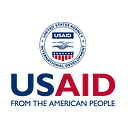Getting Stakeholder Voices into the Health Priority-Setting Process
The LHSS-JLN Learning Exchange on Institutionalizing Explicit Processes for Setting National Health Priorities
By Sarah Insanally and Julia Watson
Stakeholder engagement is a critical element of fair and inclusive national priority setting for health, and many countries devote considerable resources to it. Yet they continue to face challenges in reaching certain groups, including political leaders, ministry of finance officials, the public — especially underserved communities — and private sector organizations both inside and outside the health sector.
Last year, eight countries discussed their experiences with these and other challenges in the Institutionalizing Explicit Processes for Setting National Priorities Learning Exchange, an initiative led by the USAID-funded Local Health System Sustainability Project (LHSS) in collaboration with the Joint Learning Network for Universal Health Coverage (JLN).
Among other things, the learning exchange participants wanted to explore how to work effectively with specific stakeholder groups and make sure the loudest voices aren’t the only ones heard. This blog shares what they learned from one another about institutionalizing effective stakeholder mechanisms in national health sector priority setting.
Clarity of purpose. Learning exchange participants agreed that it is essential for ministry of health (MOH) practitioners to have a good understanding of the goal of stakeholder engagement at each step of the priority-setting process so that resources can be directed to the most relevant stakeholders. This clarity is also helpful when communicating to stakeholders the importance of their participation and for keeping them engaged throughout the process.
Timing. Strategic stakeholder identification and engagement does not happen only at the beginning of the priority-setting process, and different stakeholders may need to be engaged or re-engaged at critical points. For example, in Thailand, stakeholders participate in brainstorming before the Twenty-Year National Strategic Plan is drafted, then at a subsequent stage to provide feedback on the draft plan, and finally, to ensure that their organizations’ missions are aligned to the final plan. In Malaysia and Rwanda, the Ministry of Finance is involved throughout the priority-setting process.
The learning exchange included MOH health planning and financing practitioners from Bangladesh, Ethiopia, Lao PDR, Malaysia, the Philippines, Rwanda, South Africa, and Thailand.
Multiple platforms. The teams described how they use different platforms to engage different stakeholders, including government ministries, subnational administrative and health authorities, academics, community representatives, patient groups, and funders. In Malaysia, platforms include focus groups, technical working group (TWG) meetings, workshops, seminars, dialogue sessions, and roadshows. The MOH-led TWGs bring in perspectives from outside the health sector, while engagement with central government agencies ensures they understand the rationale for priorities, which in turn strengthens the link to planning and budget allocation decisions. Both Ethiopia and Rwanda use existing structures — such as facility-level health committees — to engage stakeholders at all levels of the health system, and in the Philippines, local government representatives are engaged to ensure that priorities at the subnational level are fed into the broader consultative process.
Helpful tools. Participants also discussed how using tools such as political economy analysis, stakeholder mapping, and stakeholder categorization can support more strategic stakeholder engagement by helping the MOH to systematically identify and understand priority stakeholders. For example, in Thailand, stakeholder engagement begins with an analysis of the roles of a wide range of stakeholders, including those working on health strategy implementation. The committee and working group drafting the Twenty-Year National Strategic Plan discuss the findings of the analysis and select representatives of the most important stakeholder groups. Key stakeholders have included the National Health Security Office, the National Institute for Emergency Medicine, the Government Pharmaceutical Organization, the Thai Health Promotion Foundation, the Healthcare Accreditation Institute, the Health Systems Research Institute, the chief executives of the Ministry of Public Health and representatives from health districts, and civil society organizations.
Accountability. Finally, learning exchange participants noted that stakeholder engagement should be accompanied by actions for accountability, including making key stakeholders aware of the outcomes of the priority-setting process and the rationale for these decisions. Stakeholders should also be encouraged to advocate for their priorities in plans and budgets. The Department of Health in South Africa, for example, engages the media to help communicate with the public, and the MOH in the Philippines identifies and engages with champions for health priorities in the legislature. Importantly, the Malaysia MOH routinely assesses the quality and results of stakeholder engagement with the goal of strengthening it in subsequent cycles. Such actions help to institutionalize continued engagement of stakeholders in the priority-setting process.
While the details of the stakeholder engagement process must, of course, be tailored to a country’s own circumstances, these practices uncovered by the learning exchange participants suggest promising approaches for other countries seeking more fruitful interactions with stakeholders during the process of setting national health sector priorities.
Stay tuned for the final blog in this series, which will examine approaches for meeting the ultimate objective of institutionalizing an explicit process for setting national health priorities: to influence health policies, plans, and budgets.
About the authors:
Sarah Insanally, DrPH, is a health systems specialist on the LHSS Project.
Julia Watson, PhD, is a health economics and financing specialist on the LHSS Project.
See the previous blogs in this series:
What’s Getting in the Way of Fairer National Priority Setting for Universal Health Coverage?
How Countries Are Institutionalizing National Priority Setting for Universal Health Coverage
